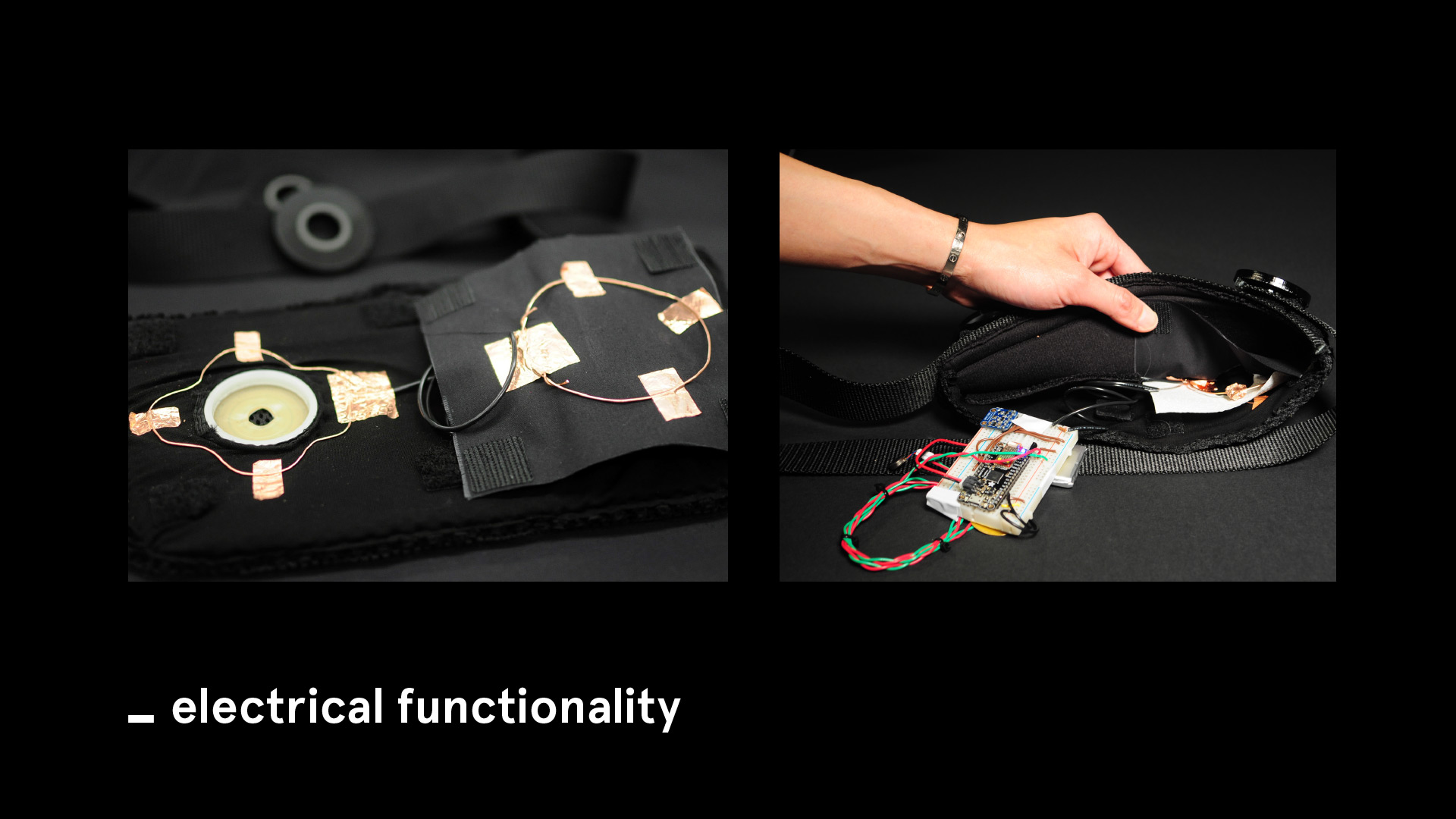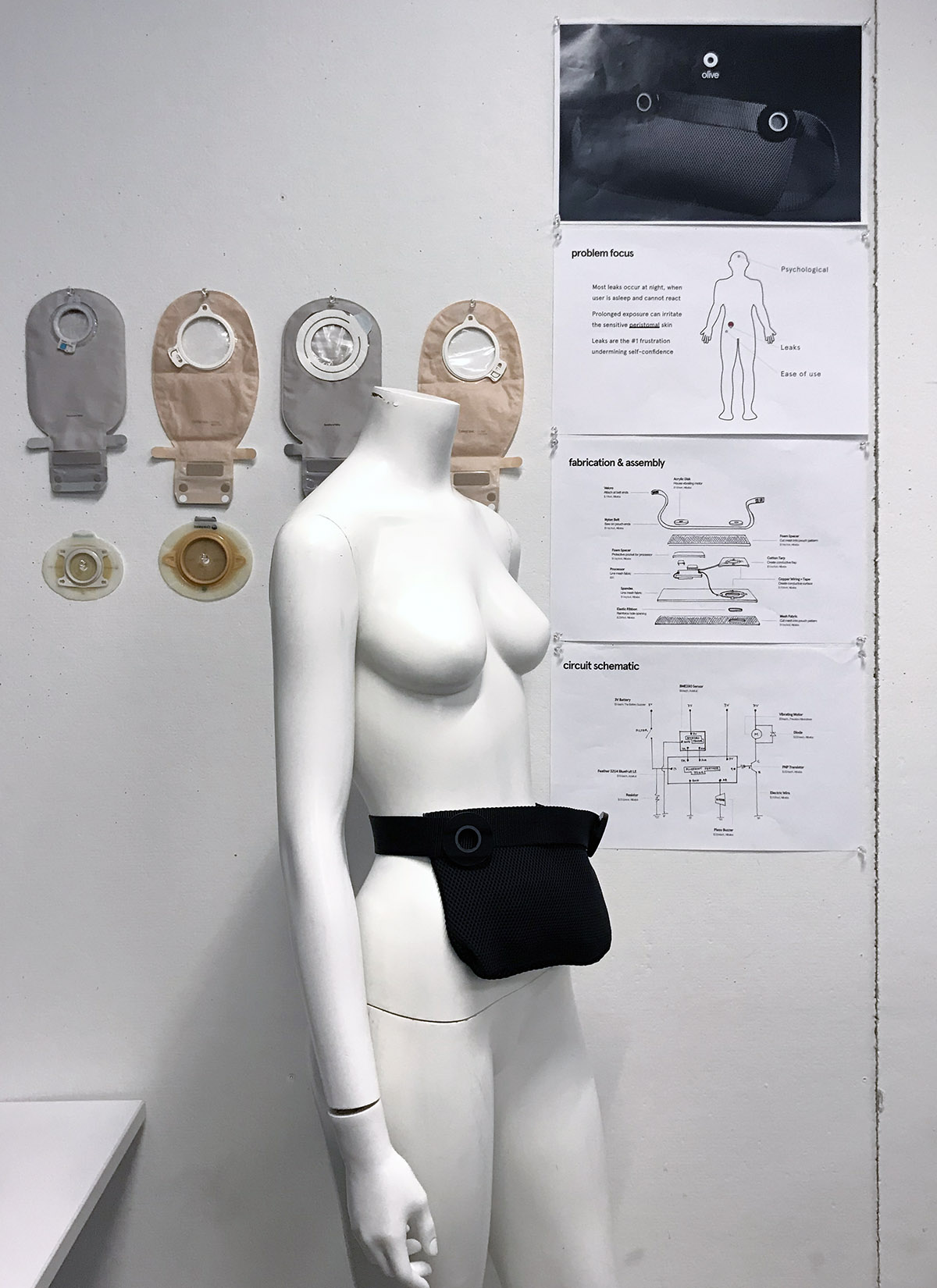A growing concern
Approximately 800,000 people in the U.S. are living with stomas as a result of surgeries treating IBD, Crohn's, colon cancer, and other colon-related diseases. While many physical concerns, such as keeping peristomal skin healthy and remaining sufficiently hydrated, require constant upkeep, we also identified important psychological health metrics that ostomates faced.
User research
From our interviews, we developed a user journey of an ileostomate to show the cadence of ostomy appliance management required.
Our research led us to focus on developing a wearable solution to ease the process of ostomy management, focusing on 4 design principles:
-
Sexy: transform a process that can wear down a user's self-esteem into a product that is sleek and empowering
-
Functional: effective at leak detection and alerting the user
-
Versatile: adaptable to a wide variety of body and stoma types
-
Reliable: offering ease of mind and physical security in a portable package
Ergonomic demonstration of how the product can be worn
Proof-of-concept demonstration of Olive's leak detection alert
Fabrication process
Throughout the 4-week design sprint, we focused on:
- Form factor inspired by high-fashion
- Proof-of-concept leak detection across a disposable filter paper that could be cheap and allow for a reusable belt
- Electrical prototyping with microcontrollers and protoboards
Electrical functionality
The belt uses 2 conducting wire coils separated by a piece of filter paper. When the paper is wet, the circuit will trigger a 3V vibrating motor and piezo-electric buzzer.
We used a Bluefruit Feather 32u4 microprocessor and a BME280 Humidity & Moisture sensor to transmit data via Bluetooth to a user's mobile phone.
In future iterations, we imagine a companion app that will not only alert at the time of a leak, but also log this data along with other important health statistics for ostomates.
Companion App
Mock of a proposed ostomy support app
Final Product
The final product was the result of only a 4-week design sprint, and involved many iterations in functionality and form factor. In the future, we hope to adapt it to be even sleeker for possible daytime wear.







